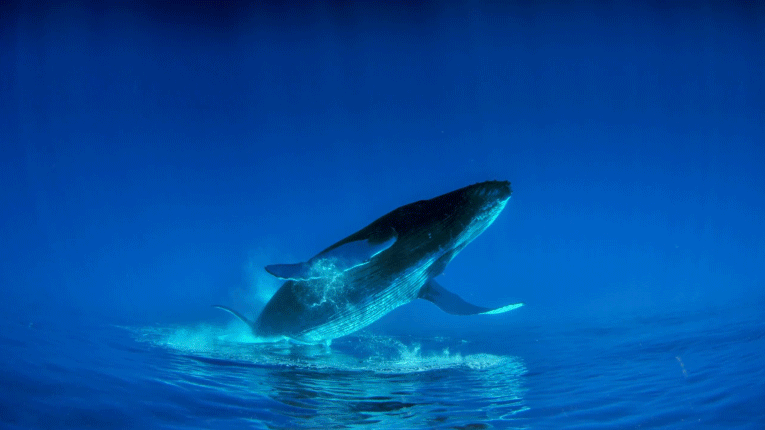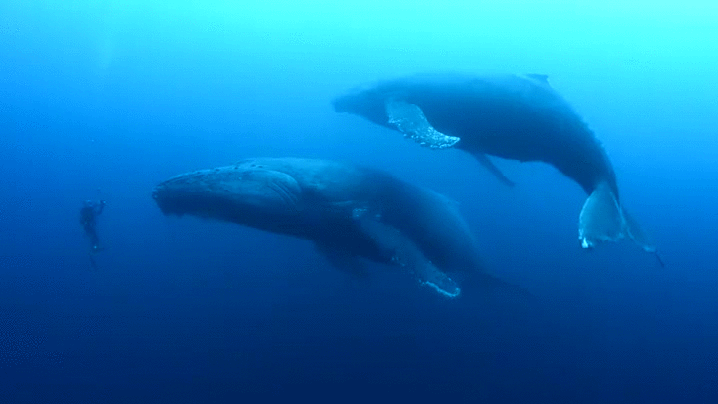The Humpback Whale
The Humpback Whale (Megaptera novaeangliae) is a baleen whale recognized for its long pectoral fins and distinctive body shape. Adults can reach 50–60 feet in length and weigh up to 40 tons. Their name comes from the arching motion they make when diving, which gives the appearance of a hump.

Humpbacks are widely known for their acrobatic displays. They frequently breach, slap the water with their fins or tails, and engage in complex surface behavior. These movements are believed to play roles in communication, mating, and possibly parasite removal.

One of the most notable features of Humpbacks is their vocalization. Male Humpbacks produce long, complex songs that can last for hours and travel over great distances. The purpose of these songs is not fully understood, but they are likely used in mating communication. Each regional population has distinct variations in its song structure.

Humpback Whales feed primarily on small schooling fish and krill. They use a unique technique called bubble-net feeding, where they create a circular wall of bubbles to trap prey before lunging upward through the center with their mouths open. This method is often performed cooperatively among several individuals.

They migrate thousands of miles each year, traveling between polar feeding grounds and tropical breeding areas. These migrations are among the longest known in any mammal. During migration, Humpbacks rely on stored body fat, as they rarely feed in warmer waters.

Humpback Whales were heavily hunted during the 19th and early 20th centuries. After the 1960s, commercial whaling bans allowed many populations to recover. Current estimates suggest there are now over 100,000 individuals globally, though some regional groups remain at risk.
